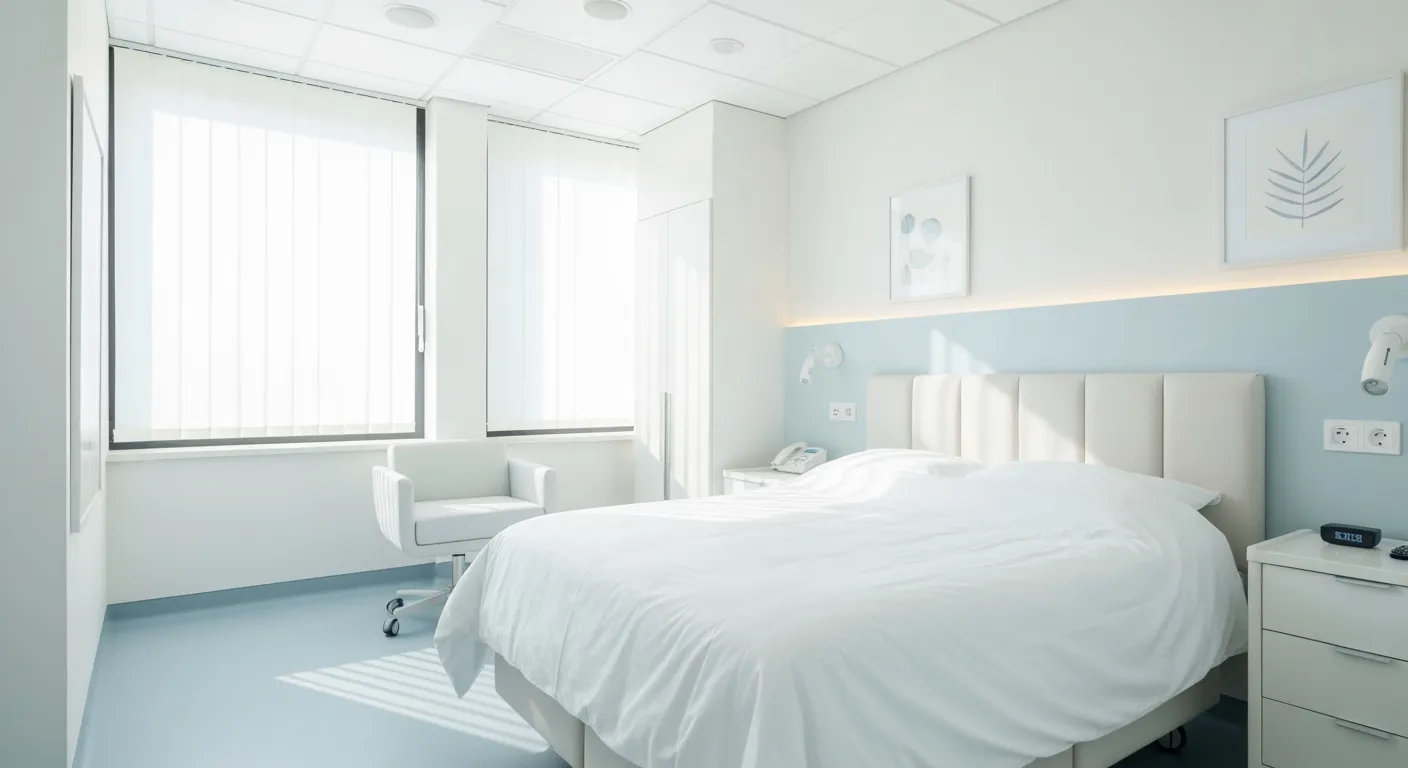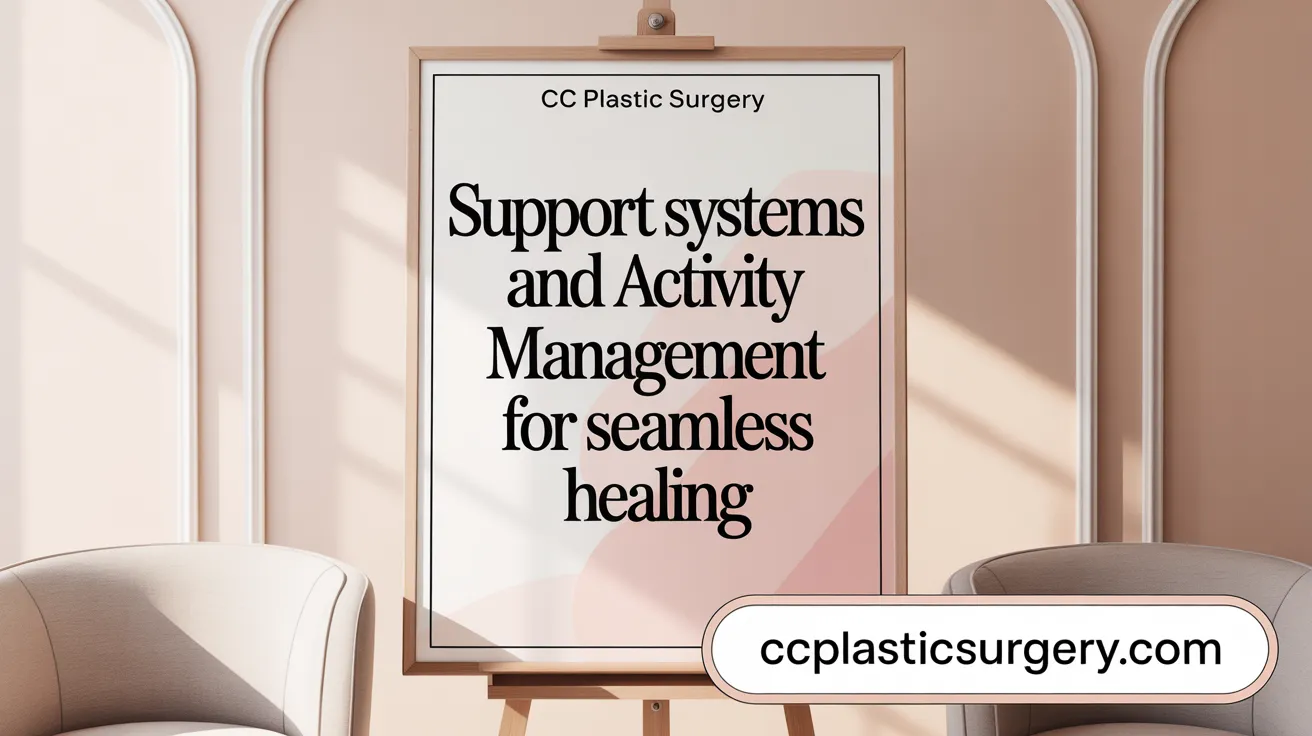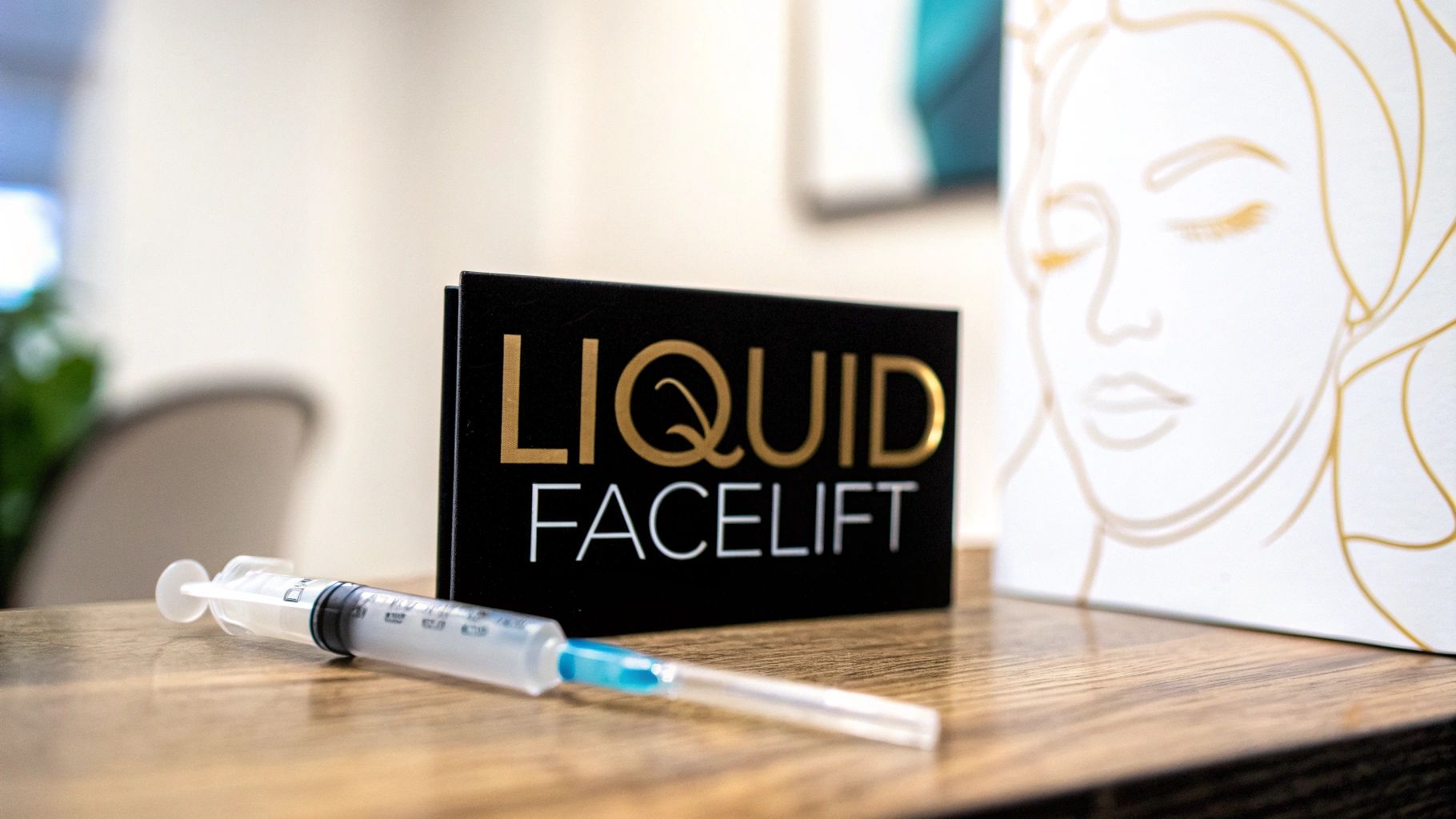
December 21, 2025
Discover best procedures for aging skin today
Explore best procedures for aging skin - from non-invasive treatments to surgical options - and see downtime, costs, and results.
Nov 5, 2025

Optimizing recovery after plastic surgery is vital for achieving the best outcomes and minimizing complications. Adhering to your surgeon's tailored aftercare guidance and understanding the key elements of post-operative recovery can significantly influence the healing process. This article explores expert-backed tips and critical steps to enhance your recovery journey, ensuring safety, comfort, and lasting results.

Following your plastic surgeon's post-operative instructions is essential for a smooth and complication-free recovery. Strict adherence helps prevent issues such as infection, increased bruising, and scarring. Taking prescribed medications exactly as directed—including completing the full course of antibiotics—is vital for infection prevention and effective pain management. Attending all follow-up appointments allows your surgeon to closely monitor your healing process and adjust care if necessary to ensure the best possible outcome.
Patients should take all prescribed medications as instructed, including pain relievers and antibiotics. Pain control strategies are important not only to ease discomfort but also to avoid stress and inflammation that can delay healing. Completing antibiotic courses fully helps prevent infections that could severely impact recovery. Avoid alcohol while on pain medication and always take medicines with food when recommended to minimize side effects.
Careful observation for warning signs is crucial during recovery. Watch for a fever exceeding 101°F, persistent vomiting, excessive bleeding, increased drainage or swelling, redness, heat, or unusual pain around incision sites. If any of these symptoms appear, contact your surgeon immediately to address potential complications early.
Regular follow-up visits are critical checkpoints. Surgeons assess your progress, manage dressings or drains, remove sutures if needed, and provide guidance on safely resuming activities. These visits help detect any issues before they worsen and ensure your recovery stays on track toward optimal results.

Managing post-operative discomfort is essential for a smooth recovery. Patients should take prescribed pain medications exactly as directed by their surgeon to control pain effectively. Unmanaged pain can prolong the healing process, so following the medication schedule is important. To reduce swelling, ice packs may be applied cautiously but never directly on the skin. Use them only as instructed by your healthcare provider to avoid skin damage while benefiting from the cold therapy. Rest is crucial during the first week after surgery, and patients should avoid strenuous activities until their doctor gives approval. For more detailed guidance, see Post-operative care support persons and post-operative pain control strategies.
Proper incision care begins with keeping the surgical area clean and dry. Dressings should be changed according to the surgeon's instructions to prevent infection. Avoid immersing incisions in water—such as swimming or hot tubs—for at least two weeks after surgery. Once stitches are removed, usually between 5 to 21 days post-surgery depending on the procedure, applying fragrance-free moisturizers like Eucerin or aloe vera helps soften scar tissue and relieve itching.
Sun protection is vital to minimize scar visibility. Use a waterproof sunscreen with SPF 30 or higher or wear protective clothing to shield scars from UV rays. Starting scar massage approximately two weeks after surgery promotes better healing by improving blood flow and breaking down scar tissue. For more information, refer to Proper wound care after plastic surgery and incision care techniques.
| Aspect | Recommendations | Reason |
|---|---|---|
| Pain Management | Take prescribed meds as directed | Reduce discomfort, speed healing (Post-Operative Instructions) |
| Swelling Control | Use ice packs carefully, avoid direct skin contact | Decrease inflammation and discomfort (Using ice packs safely post-surgery) |
| Incision Care | Keep dry, change dressings as instructed, no swimming | Prevent infection and promote healing (Incisions and suture line healing) |
| Scar Care | Moisturize post stitch removal, use SPF 30+ sunscreen | Minimize visible scarring, protect skin (Scar softening techniques |
| Activity Restrictions | Rest, avoid strenuous activity until surgeon approval | Avoid strain on healing tissues (Rest and activity restrictions post-surgery |

Eating a balanced diet that is rich in proteins, vitamins A, C, B12, zinc, fiber, antioxidants, and bromelain is essential after plastic surgery. These nutrients support tissue repair, boost immune function, and help reduce inflammation. Incorporating plenty of fruits, vegetables, and lean proteins into meals enhances the body's natural healing processes. Furthermore, staying well-hydrated by drinking plenty of water aids skin healing and overall recovery. For more details, see Balanced diet after plastic surgery and Diet and hydration for recovery.
Smoking and vaping have a detrimental effect on healing after plastic surgery. They impair blood circulation and decrease oxygen delivery to the tissues, which slows wound healing and raises the risk of complications like excessive bruising, infection, and poor scar formation. To support optimal healing, patients are strongly advised to quit smoking at least two weeks before surgery and continue abstaining throughout the recovery period. For comprehensive information, refer to Avoiding tobacco for better healing, Smoking cessation during recovery, and Effects of smoking on recovery.
Lifestyle habits before and after surgery greatly influence recovery outcomes. Patients should avoid tobacco products and alcohol, as both can hinder healing. Planning ahead to arrange help before plastic surgery with tasks during the initial few days post-surgery allows better rest and reduces stress. Engaging in light movement like short walks can enhance circulation but strenuous activities should only resume after surgeon clearance. Learn more about the daily movement benefits post-surgery and general Post-operative recovery guidelines. Managing stress and maintaining a calm mindset can also promote smoother healing.
Balancing nutrition, hydration, and lifestyle choices, alongside careful adherence to surgeon instructions, creates the best environment for a faster and safer recovery. For detailed guidance, see plastic surgeon's aftercare guidelines and the importance of follow-up appointments.

Having support during the initial 48 to 72 hours after plastic surgery is essential. Loved ones or caregivers assist with medication management post-surgery, mobility, hygiene, and can respond quickly in emergencies. This presence helps reduce stress, ensuring patients feel safer and more comfortable while they navigate common post-operative recovery guidelines and fatigue.
Engaging in early, gentle movement such as short walks—once approved by your surgeon—can significantly benefit your recovery. Light activity promotes healthy blood circulation which helps reduce swelling, lowers the risk of pneumonia and blood clots, and accelerates healing. This is highlighted in the benefits of early mobilization post-surgery. Nonetheless, strenuous activities including heavy lifting, housework, driving, and operating machinery must be avoided until your surgeon gives the go-ahead, as premature exertion could lead to complications. For detailed recommendations, see the rest and activity restrictions.
Organizing help with daily tasks like chores, childcare, and errands before surgery creates a supportive recovery environment. Preparing your home with necessary supplies such as medications, comfortable clothing, and ice packs allows you to rest more effectively and focus on healing. This advance planning minimizes interruptions and stress during the critical initial recovery period. For tips on arranging help before plastic surgery and preparing your home for recovery, visit those resources.
The combination of a strong support system and carefully managed activity levels ensures a smoother, safer recovery path following plastic surgery.

Planning ahead is essential to ensure a smooth recovery after plastic surgery. Patients should arrange for help with household chores, childcare, and errands before the procedure. Preparing meals in advance and setting up a comfortable recovery space help minimize interruptions during the healing process. Achieving and maintaining an ideal weight before surgery reduces surgical risks and improves outcomes, particularly for body contouring procedures. Additionally, stopping smoking and vaping at least two to four weeks before surgery is strongly recommended, as tobacco use impairs blood circulation and delays wound healing.
Regular follow-up appointments are vital during the recovery phase. These visits allow surgeons to assess healing progress, manage any complications early, and advise when patients can safely return to their normal activities. Open and prompt communication between patients and their surgeons ensures that any unusual symptoms — such as increased pain, swelling, fever, or drainage — are addressed quickly. This proactive approach helps maximize both the safety and aesthetic results of the surgery.
Recovery from procedures like facelifts can last up to 30 days or more, with some subtle effects persisting for months. Patients often experience initial discomfort, swelling, and bruising during the first week, which gradually improve over time. Taking prescribed pain medications, resting adequately, and following post-operative care instructions help ease this phase. Maintaining a calm mindset, managing stress effectively, and leaning on a support system contribute positively to the overall healing journey. Staying in close contact with the surgical team enables patients to navigate this longer recovery with confidence and safety. For detailed insights, refer to the facelift healing timeline and phases.
Successful recovery from plastic surgery hinges on a combination of careful adherence to medical advice, effective pain and wound management, healthy lifestyle choices, and having a robust support system. By preparing thoughtfully before surgery and maintaining open communication with your healthcare provider throughout your healing journey, you can optimize your recovery, minimize complications, and enjoy the lasting benefits of your procedure.

December 21, 2025
Explore best procedures for aging skin - from non-invasive treatments to surgical options - and see downtime, costs, and results.

December 20, 2025
What is a liquid facelift? Learn how dermal fillers and neuromodulators restore youthful contours without surgery, with benefits, costs, and expected results.

December 19, 2025
Wondering how long before botox kicks in? Discover a day-by-day timeline, key factors, and when you will see the full effect.